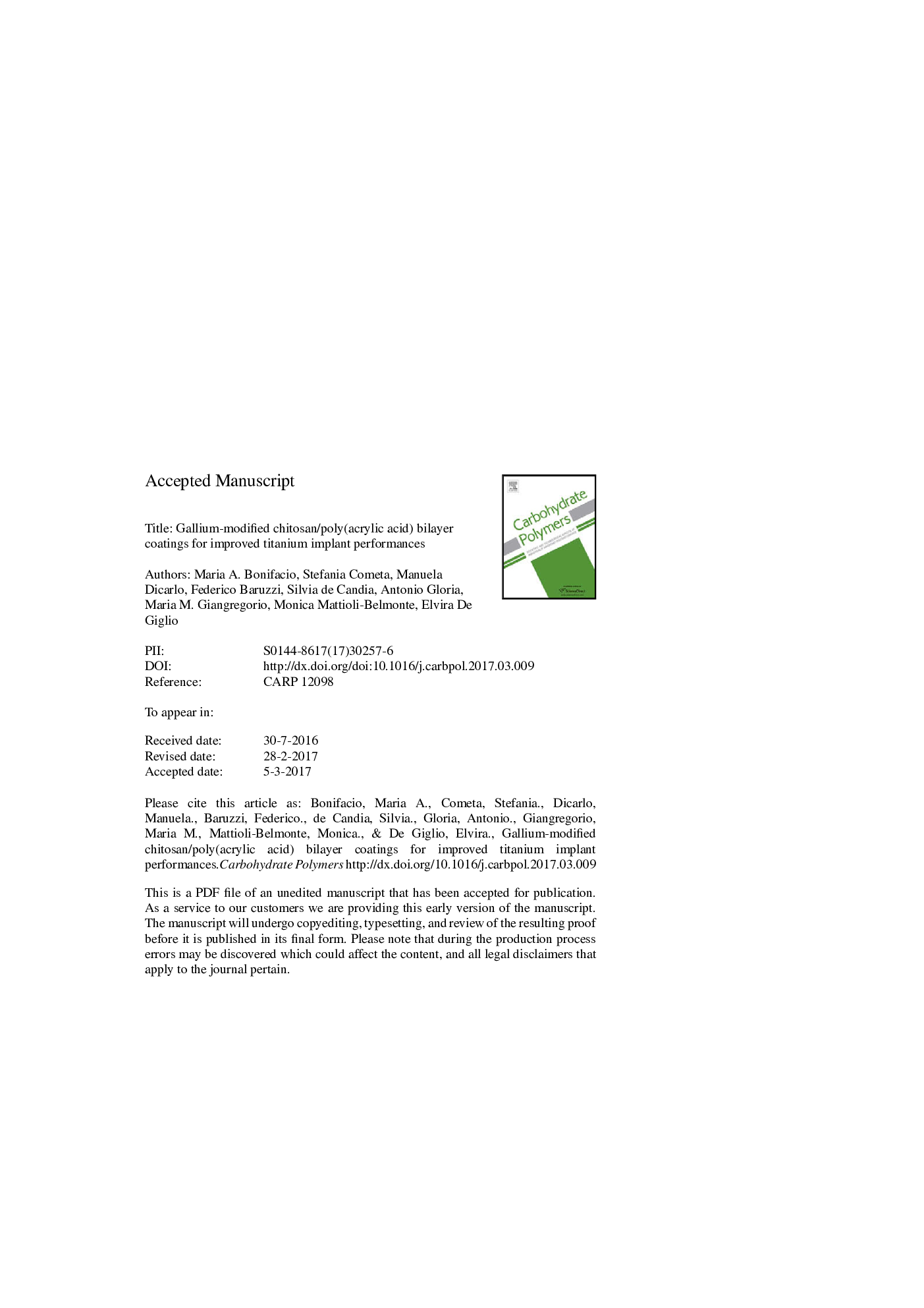| Article ID | Journal | Published Year | Pages | File Type |
|---|---|---|---|---|
| 5157365 | Carbohydrate Polymers | 2017 | 23 Pages |
Abstract
A gallium-modified chitosan/poly(acrylic acid) bilayer was obtained by electrochemical techniques on titanium to reduce orthopaedic and/or dental implants failure. The bilayer in vitro antibacterial properties and biocompatibility were evaluated against Escherichia coli and Pseudomonas aeruginosa and on MG63 osteoblast-like cells, respectively. Gallium loading into the bilayer was carefully tuned by the electrochemical deposition time to ensure the best balance between antibacterial activity and cytocompatibility. The 30Â min deposition time was able to reduce in vitro the viable cell counts of E. coli and P. aeruginosa of 2 and 3 log cfu/sheet, respectively. Our results evidenced that the developed antibacterial coating did not considerably alter the mechanical flexural properties of titanium substrates and, in addition, influenced positively MG63 adhesion and proliferation. Therefore, the gallium-modified chitosan/poly(acrylic acid) bilayer can be exploited as a promising titanium coating to limit bacterial adhesion and proliferation, while maintaining osseointegrative potential.
Related Topics
Physical Sciences and Engineering
Chemistry
Organic Chemistry
Authors
Maria A. Bonifacio, Stefania Cometa, Manuela Dicarlo, Federico Baruzzi, Silvia de Candia, Antonio Gloria, Maria M. Giangregorio, Monica Mattioli-Belmonte, Elvira De Giglio,
